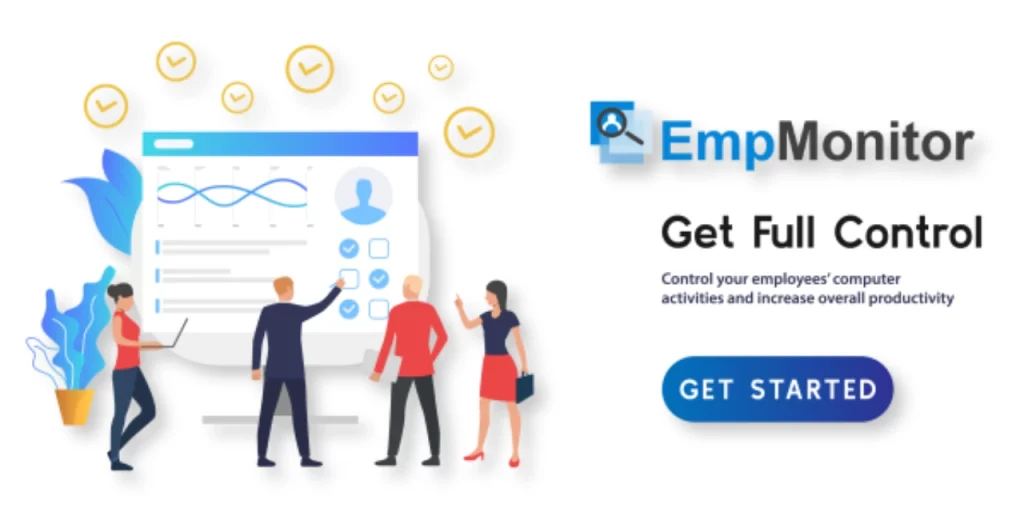Making informed decisions about your workforce can often feel like navigating through a fog. However, leveraging data can illuminate the path, enabling impactful choices that empower employees and drive business success. This is the promise of people analytics. Analyzing successful people analytics examples can help you enhance your strategies and gain insights into how leading companies have transformed their operations into successful enterprises.
By analyzing employee data, you gain a profound understanding of your most valuable asset – your people. This guide explores 7 compelling examples of people analytics that can transform your organization. We’ll delve into how data empowers you to optimize everything from recruitment to retention, fostering a high-performing and engaged workforce. Discover how people analytics can take your business from good to great, all backed by the power of data.
Listen To The Podcast Now!
What Is People Analytics?
People analytics, or workforce analytics, involves leveraging employee data to make informed business decisions. While some organizations rely on basic methods like quarterly surveys and spreadsheets, the most successful ones dive deeper. They utilize advanced people analytics examples to guide decisions on employee engagement, hiring, productivity, planning, and other activities.
People analytics transforms HR through the usage of data to drive talent management and enhance performance. Studies have shown that executives gain confidence with better data access, enabling quicker, more effective decisions. This approach empowers HR professionals and managers to optimize workforce potential, fostering inclusive, forward-thinking workplaces and improving overall organizational performance.
The importance of people analytics cannot be exaggerated. Let us examine its importance and see how it can help your company.
Importance Of People Analytics:
High-performing companies rely on great employees, but sometimes, their efforts yield minimal returns or lower productivity. Using workforce analytics enables employers to gauge the skill set of employees and accordingly assign tasks to ensure better productivity.
Even for firms facing high turnover, people analytics can help them pinpoint reasons for decreased performance, helping retain staff by addressing engagement issues.
Regardless of a company’s size, hiring skilled employees is challenging. Workforce analytics tools can also help you analyze past applicants and company needs to identify ideal hires, improving recruitment success.
Here are seven people analytics examples of leading brands effectively leveraging analytics, accompanied by essential insights to spark inspiration for your organization’s approach.
Seven People Analytics Examples From Top Brands To Capitalize On:
People analytics extends beyond primary employee satisfaction surveys, offering numerous practical applications and possibilities.
Let us now through seven examples and discover how these thriving companies utilize this tool to coach managers, track employee engagement activities enhance retention rates, elevate customer service, and shape hybrid work policies.
Clarifying Misconceptions About Recruitment Practices At Johnson & Johnson:
Johnson & Johnson’s people analytics team tested the belief that experience mattered more than talent for definite roles, as they observed a decline in hiring college graduates. Analyzing data from 47,000 employees, they discovered recent graduates performed equally well and stayed longer.
This insight led to a shift in recruitment focus back to college campuses and increased investment in leadership development and mentorship programs, challenging the initial assumption and optimizing hiring strategies based on data-driven findings.
Forecasting The Success Of Managers And Employees At Google:
Google relies on workforce data to achieve its business objectives. Unlike traditional HR departments, Google has a people operations team dedicated to researching and improving organizational practices.
For instance, through Project Oxygen, Google analyzed data to identify effective management traits, using findings to coach managers companywide. Similarly, Google redefined its hiring process based on data analysis, prioritizing qualities like empathy and communication over STEM proficiency. It is one of many fine people analytics examples.
Discovering Suitable Talent At NASA:
When NASA embarked on ambitious missions, they leveraged people analytics to prepare their workforce. Recognizing the importance of understanding workforce trends and addressing skill gaps, the HR department started utilizing an advanced database.
This database facilitated the creation of visual representations- detailing the specific skills, abilities, and technologies essential for various tasks. By mapping these requirements to individual employee roles, projects, and training needs, NASA ensures alignment and readiness to tackle future endeavors effectively.
Enhancing Employee Welfare At Fam Brands:
Fam Brands, a clothing manufacturer- learns from people analytics examples to enhance employee satisfaction. By implementing a workforce analytics platform, the company has seen notable improvements in various areas, including employee performance and engagement.
Instead of implementing a hybrid work policy without understanding its impact, the HR department analyzed data on employee locations to determine where they perform best. It revealed that employees working from home are more productive. Additionally, through analytics dashboards, Fam Brands identified previously unnoticed requirements- related to training, hiring, and communication.
Optimizing Office Space Usage At Cisco:
Cisco doesn’t just advocate for hybrid work; they use workforce analytics to guide office space decisions and remote work policies. With traditional office setups becoming outdated, efficiency in office space usage is crucial. Besides analyzing office spaces, Cisco also identifies the most efficient workspace for its employees.
The company is renowned for using workforce analytics to minimize unused office space. In a significant shift towards hybrid work, Cisco’s Chief People, Policy, and Purpose Officer eliminated strict office attendance requirements. Instead, they recognized the importance of replacing large office spaces with more flexible areas for meetings, team activities, and creative collaboration.
Boosting Employee Engagement At Clark:
Finding the factors that promote employee engagement and areas for development can be accomplished through data analysis, such as performance indicators and employee feedback.
It informs tailored strategies by HR and managers to enhance work experiences, foster positive cultures, and boost morale and productivity. We can find one of the successful people analytics examples to learn from at Clark.
Clark a shoe retailer, data points revealed a direct correlation between engagement and business performance. For every 1% increase in engagement, there was a 0.4% performance boost. Utilizing insights from their top 100 stores, Clark implemented changes such as optimizing team sizes and introducing management training programs. These initiatives yielded ongoing positive results, reported by the Chief People Officer.
Improving Efficiency At Shipsticks:
We can learn a lot from people analytics examples like at ShipSticks, leaders sought to enhance efficiency in their call center operations. Utilizing people analytics, they pinpointed specific areas for improvement rather than solely relying on feedback.
Analysis revealed that customer service representatives faced the problem of the need to navigate multiple applications to assist customers, resulting in delays.
In response, ShipSticks eliminated unnecessary apps, streamlining the support process. As a result of leveraging data-driven insights, the company optimized workflow efficiency, enabling representatives to serve customers more efficiently.
Work efficiency refers to completing tasks and work using the least time and effort. High work efficiency boosts productivity, leading to business success. Employers often urge employees to enhance their work efficiency for this reason.
EmpMonitor, a productivity tracking tool, can aid by monitoring employee activities, identifying areas for improvement, and providing insights to streamline workflows. It helps employees work more effectively, contributing to overall business success.
Let us learn how beneficial this software is in boosting efficiency at the workplace.
EmpMonitor- Boost Workforce Efficiency With Advanced Workforce Monitoring
Enhance your employees’ productivity with EmpMonitor, a robust workforce analytics software equipped with real-time monitoring capabilities to track work engagement. Its intuitive dashboard enables remote monitoring of your workforce’s productive work hours.
By automatically monitoring computer activities, EmpMonitor generates detailed reports for workflow analysis, facilitating management in maintaining accountability across various organizational levels.
The beneficial features of this software are:
Time Tracking:
The software gets rid of the hassle of manual time tracking for managers. It automatically starts to track employees’ time when they log-in to their systems, providing accurate data about their activities.
EmpMonitor acts as a comprehensive employee monitoring software. It measures unproductive time, like idle time and inactive time. Using these parameters to track freelancer time has many benefits and helps improve workforce efficiency.
Attendance Monitoring:
EmpMonitor can also serve as a freelancer time tracking tool, eliminating the need for Excel sheets to track attendance in companies.
The software keeps precise records of employee attendance and leaves, making work processes smoother and allowing flexibility to focus on other tasks.
Productivity And Engagement:
The overall productivity can be evaluated- by keeping an eye on the output and engagement of its freelance workforce.
EmpMonitor assists you in optimizing the returns on investment for your company by offering comprehensive data on productivity and unproductivity.
Data Security:
The software gives the highest priority to data security, which is crucial for any company.
By monitoring every activity of freelancers, EmpMonitor prevents fraudulent activities involving your data.
Real-Time Insights:
EmpMonitor provides managers with real-time insights to:
- Identify high and low-performing employees
- Strategize for optimal performance
- Access real-time work engagement reports for better understanding and visibility.
User Tracking:
The employee productivity tracking tool empowers employers to:
- Monitor employee behavior
- Access web history
- Retrieve browsing history.
Project And Team Management:
EmpMonitor offers detailed clarity on tasks and project management, helping in:
- Tracking freelancer work progress
- Monitoring project deadlines
- Tracking time spent on tasks
- Assigning and managing tasks seamlessly.
Therefore, EmpMonitor assists employers in tracking employee productivity, time dedication, and work progress.
Now that we have learned about this software- let us return to our blog and learn how people’s analytics influence business results and performance.
Also Read:
5 Reasons You Need Workforce Analytics In Your Office
Workforce Management- It’s Not That Difficult as You Think, Quick Tips!
How To Use People Analytics For Strategic Workforce Planning?
How People Analytics Influence Business Results & Performance:
People analytics is crucial for improving business results and performance by using data to make smart decisions about managing employees. We can understand it by analyzing a few people analytics examples. Here’s how it achieves this in five vital areas.
Recognize The Requirements Of Individuals:
People analytics helps companies thoroughly comprehend their employees’ needs, preferences, and difficulties by studying data patterns from surveys, performance measures, and HR systems.
This understanding aids in establishing a supportive workplace that caters to individual and organizational requirements. Consequently, it boosts employee engagement, satisfaction, and productivity.
Decreased Employee Turnover:
By using people analytics examples to predict possible employee turnover through factors like engagement, job satisfaction, and feedback, organizations can foresee and tackle issues leading to attrition in advance.
You can develop retention plans by granting professional advancement, acknowledgment, and attractive salaries to retain valuable staff. Lowering turnover saves on the expenses and disruptions of hiring and preserves expertise and talent within the organization.
Determining What Factors Are Important For Productivity:
Studying people analytics examples can assist in pinpointing the elements that influence productivity by examining work habits, collaboration structures, and performance information.
This allows leaders to grasp which factors lead to top performance, such as team makeup, leadership methods, and workplace attributes, and replicate these conditions throughout the organization to enhance workforce productivity.
Increased Levels Of Productivity:
People analytics assists in workforce planning and in crafting customized learning and development initiatives for employees by examining skill gaps, performance records, and career advancement opportunities. It can be understood by analyzing multiple people analytics examples.
Individual needs and career objectives are considered when developing these programs, making them relevant and engaging for all workers. Focusing on developing skills aligned with business goals can increase a company’s competitive advantage and flexibility. Analyzing certain people analytics examples can help in boosting productivity.
Attaining Business Results Driven By Personnel:
The fundamental purpose of people analytics is to ensure that business decisions are made clear by data and understanding of people. And by analyzing people analytics examples, you get to understand its purpose.
Businesses can improve talent-related procedures like hiring, training, and management to directly support business goals by understanding how workforce factors impact business success.
This alignment ensures that human resources get used efficiently to promote growth and gain a competitive edge, showcasing the tangible influence of people management on business prosperity.
Concluding Words:
People analytics proves to be a game-changer in today’s dynamic business landscape. By leveraging people analytics examples, and data-driven insights, organizations can optimize workforce management strategies, boost productivity, and drive business success.
From identifying individual needs to predicting turnover and enhancing productivity, the impact of people analytics is evident across various facets of organizational operations.
As companies continue to harness the power of data to inform decision-making and foster a supportive work environment, they pave the way for sustainable growth and competitive advantage.
Embracing people analytics is not just a trend but a necessity for businesses striving for excellence in the modern era.
If, you still have any more doubts about people analytics examples, feel free to reach out to us or you can go through the frequently asked questions section to learn more.
People Analytics FAQs
What Is Advanced People Analytics?
Advanced People Analytics creates detailed reports that go beyond simple charts and tables. This customization gives you valuable data to help you analyze trends in your organization.
What Are The 7 Pillars On Which People Analytics Rests?
People analytics rests on 7 pillars. They are:
- Talent Acquisition Pillar
- Workforce Planning Pillar
- Performance Management, Employee Lifetime Value, & Cost Modeling
- Employee Wellness, Health, and Safety Pillar
- Talent Sourcing Pillar
- Employee Retention Pillar
- Onboarding and Culture Fit Pillar
Is There A People Analytics Cycle?
Yes, a process called the people analytics cycle exists. The process involves five steps that are regularly repeated to ensure that analytics are effectively utilized in addressing business problems. Before analyzing data, it is crucial to identify the questions you aim to answer or the hypotheses you wish to validate.



















